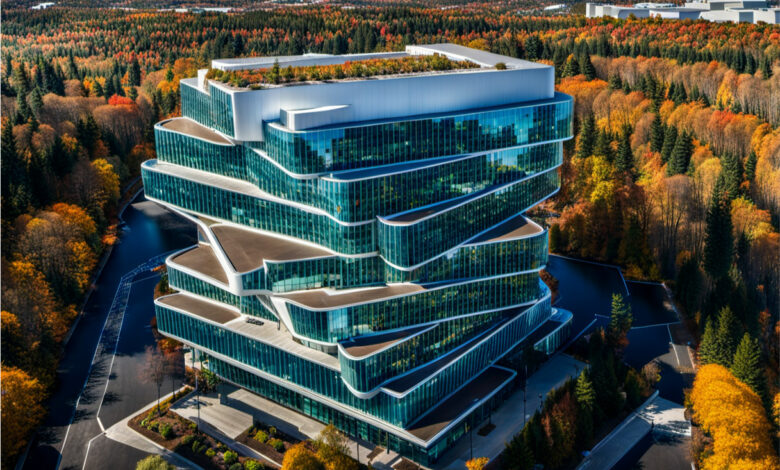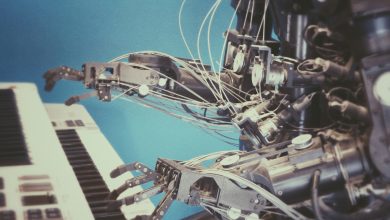
In the world of architecture, nearly every firm is flirting with artificial intelligence. However, most of them are seeking more information about AI before committing to a long-term relationship.
A January report by the American Institute of Architects (AIA), which surveyed more than 500 architectural professionals at firms of all sizes across the U.S., provides a fascinating snapshot of an industry on the precipice of massive change.
At first glance, the report reveals that AI usage in architecture is still in a fledgling state: only 6% of the surveyed architectural professionals use AI regularly in their work, with most using non-specialized applications, such as chatbots. However, a deeper dive into the report’s findings reveals that AI may soon transform the ways architects work on a massive scale.
Namely, 28% of firms are actively exploring the adoption of AI tools. The desire to explore, test, and learn is especially pronounced in architectural professionals under the age of 50, precisely the demographic that will likely shape the future of the profession. More than 78% of those surveyed want to learn more about AI’s potential applications in their work.
Alongside potential applications, it’s vital to consider the unique workflows in the field of architecture that may serve as speed bumps on the road to widespread adoption. Here are the key challenges that architectural firms face in their AI adoption and integration strategies – and the best practices to keep in mind when considering your own approach.
Push past the “FOMO” stage
Across various industries, including architecture, many organizations are exploring AI applications in a superficial manner. They’re driven by a “fear of missing out” (FOMO) on the transformative potential of AI, often exploring the technology because they believe they have to. They simply don’t want to fall behind competitors in their market.
In other words, they approach AI as a solution seeking a problem: they know AI can be a powerful hammer, but not everything should be solved with that hammer. Like any tool or technology, it’s important to start your exploration and adoption strategy by defining the workflow challenges for your firm. AI won’t always be the answer, but there may be instances where it can provide valuable insights.
From there, you can focus on incremental innovation within the workflow. It’s not about creating an entirely new workflow for architects. Improving specific steps, and only those that make sense, is a good starting point for adopting AI.
Recognize where AI fits best
So, what are those steps where AI fits best? Productivity and convenience should be the guiding principles in your workflow assessment, rather than entrusting AI with the tasks that architects truly enjoy doing. There’s a popular saying that applies here: “I want AI to do the dishes, not to do the fun, creative stuff.”
To use another analogy, imagine the experience of being a Michelin-star chef versus a cook who enjoys making meals at home. They’re both doing “the same thing,” but the expert chef requires and expects things a certain way to provide an elevated gastronomic experience repeatedly, reliably, and at scale. Accomplished sous-chefs take care of the prep work and side dishes. They don’t have to dig through cupboards and drawers to find serving dishes and their trusty knives. Everything they need is readily accessible and streamlined, allowing them to focus on the creativity and quality of the final product.
Within the architectural workflow, AI works best when it’s used similarly. It may certainly change the way architects work, but only in ways that enhance their creative expertise.
Ultimately, the right tools at the appropriate stages of the workflow will also benefit clients. We’re already seeing it happen in the form of faster project timelines, accelerated prototyping and design, and reduced costs and waste due to improved resource management.
Understand how quickly things will evolve
In the AIA report mentioned above, many early adopters (and explorers) of AI in architecture felt a disconnect between their job-related needs and the available AI applications. Thus far, it has created a prevailing mindset of AI tools as a nice-to-have rather than a must-have; however, it’s important to remember that these are the “early days” of AI.
Greater tool specialization in the field of architecture is in motion, and it will create a watershed moment for adoption across the industry. Tools like Graphisoft’s Archicad AI Visualizer are already helping firms visualize and iterate complex designs in real-time, allowing smaller firms to reach new heights in operational agility. Furthermore, Graphisoft’s AI Assistant introduces new ways to interact with the software, helping designers every step of the way.
Specialized applications will assist with the grueling aspects of the job, such as generating the correct types of documentation for any permitting or construction submission. Instead of generic chatbots like ChatGPT or Gemini, architects will have AI assistants that possess expert-level knowledge in their field. AI will do much of the heavy lifting in terms of delivering fast-but-accurate results, simplified interfaces, and automating mundane tasks.
As they’re being developed and honed, these innovations might be disparate and require switching between products. Faster than you think, they will be seamlessly integrated into the platforms and workflows that architects use on a daily basis.
Create a collaborative learning landscape
With so much AI evolution in motion, it may seem like the smartest move could be to sit back and wait for the perfect AI solution to take shape. However, consistent engagement with ongoing innovation is the best way to ensure smooth adoption and seamless integration into your workflow when the time is right.
Within your firm, the tech-savvy individuals on your team can be trailblazers in that process. Gen Z and millennial professionals, in particular, have always lived in a world where emerging technology is a way of life. They’re used to pushing boundaries, identifying thoughtful ways to improve traditional workflows, and bringing fresh perspectives to the table.
Of course, experimentation also needs a sense of structure. At Graphisoft, we’ve seen tremendous success in hosting our “GRID” innovation days and attending meetups for architectural professionals interested in exploring innovative applications of AI. These programs provide a dedicated forum for peer-to-peer learning, knowledge sharing among members of the broader architectural community, and hands-on experience with cutting-edge tools.
After all, the future of AI in architecture will be shaped by the people who use these tools in their daily work. These collaborative gatherings allow early adopters and experimenters to discuss tangible outcomes, explore real-world use cases, and optimize workflow integration.
The right way to explore AI in architecture
While general applications of AI are certainly impressive, the thoughtful integration of AI into architectural workflows requires thinking beyond the power of AI itself. Defining how AI can work best for the people on your team must take center stage in that process.
Adopting AI for AI’s sake is not an effective strategy. Instead, think about the challenges your team faces, and consider how changes to their processes and workflow might help. Explore how AI can streamline time-consuming tasks that architects don’t exactly love. Keep a watchful eye on the fast-paced development of AI tools built specifically for architects. And advocate for a collaborative landscape where your team members and the architectural community can discover next-generation tools, share innovative ideas, and develop new skills together.




